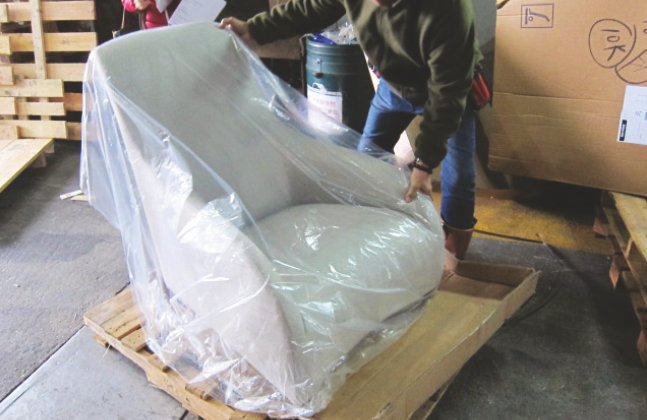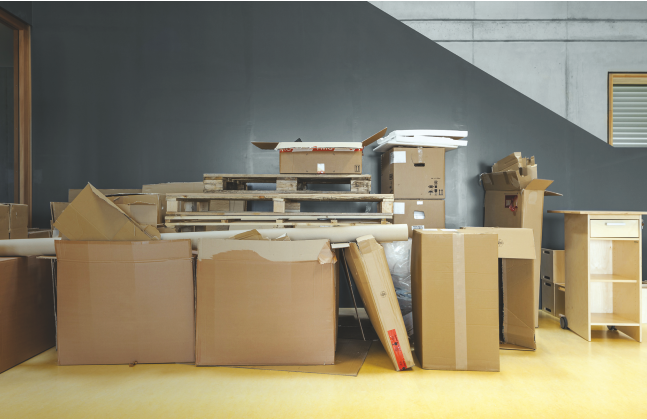Importing furniture through rail can be 30-40 per cent cheaper, but still longer delays in delivery and the risk of damage in multiple handling makes importers stick to the road
Be it a house or office, the way it is furnished and maintained gives the first impression of the status of the people living there. Growing urbanisation, increasing purchasing power of people have transformed furnishing from a mere necessity to status symbol, with many people belonging to the affluent class changing their furniture every year or so, to keep their homes and offices looking trendy. This very trend is also fuelling demand for imported furniture in the country, which is more attractive and elegant, compared to the routine designs offered by the mom and pop stores in the coun try. “While the demand for imported furniture has been in India since the late 90s, but it significantly picked-up in the year 2000, with people mostly preferring furniture made from marble and those with glass top,” says Arvind Agarwal, Proprietor of Carigari, a leading imported furniture supplying chain in the state of Telangana.
The Indian furniture market is highly fragmented and unorganised, and is expected to grow to over $27 billion by 2022, which represents a huge opportunity for furniture exporters from across the globe. With demand set to outstrip supply, many multinational brands such as IKEA, Walmart and UAE-based Danube have set their foot into this lucrative market. In terms of market size India is the 14th largest market in the world valued at $18.93 billion in 2016 and forecast to reach $21.22 billion by 2018, growing at a CAGR of 6.40 per cent, reveals Hong Kong Trade Development Council (HKTDC). The country is also one of the largest importers of office furniture, accounting for just under one-fifth of global imports in the sector. Currently, demand for imported furniture in both housing and office category is growing, but it is a bit higher on the office furnishing side.
Factors supporting market growth
While it is only the upper class of the society that opts for imported furniture, but still growing urbanisation, rapidly expanding distribution network of exclusive stores, easy availability of standardised furniture products, growing hospitality and tourism sector, brand consciousness among consumers contribute to the growing market of imported furniture. Those who can afford also travel to China and Italy for importing furniture. Even though customisation of furniture to resemble imported ones does happen in India, but still it doesn’t give the finish and elegance that imported furniture offers.
“However, it is to be noted that imported furniture market in Telangana is still in a very nascent stage and accounts for hardly about 2 per cent of the total furniture sold in the state,” reveals Pradeep Gupta, Director, Dinterio, another reputed retail chain of imported furniture. The market due to its fragmented and unorganised nature is very competitive as well.
IKEA COMES TO HYDERABAD
IKEA makes its foray into the Indian market with a 400,000-square feet large ‘home entertainment centre’ in Hyderabad. The company has brought land parcels Hyderabad, Mumbai, Bengaluru and Delhi. Going forward, the second store will open in Mumbai in 2019. Looking ahead, more cities will be added including Pune, Surat, Ahmedabad, Chennai and Kolkata. Hinting at IKEA’s sourcing strategy Patrik Antoni, Deputy Country Manager, IKEA India says, “Globally India stands at 3 per cent of the total IKEA sourcing which constitutes €350 million worth of resource. We are sourcing from 55 countries around the world. In Europe, around 60 per cent of the sourcing comes from the same market. In China, we source 70 odd per cent of the resources. In India we will source may be 5-6 per cent locally and that number is about to grow more than 30 per cent. Overall, we have around 9,500 products but currently make only 200 of them in India and we have to increase it. For us, manufacturing of our furniture is based on global competitiveness and India as a market at the moment is not big enough to have a manufacturing factory.”

Import market
China is the largest exporter of furniture into India with a share of about 80 to 90 per cent, followed by Malaysia, Turkey, Italy and other European countries. But in the future the market dynamics are going to change because China is becoming expensive by about 10 to 15 per cent every year, says Pradeep. Moreover, with the entry of global players like IKEA, who plan to manufacture and source their global requirements from India, the future will be for ‘made in India’ products. These players are expected to capture a big chunk of unorganised imported furniture market. Earlier, a lot of furniture used to come from Malaysia, but gradually as imports from China picked up, Malaysia has now become a marginal player.
Furniture is largely imported by major import houses in Delhi, Chennai, Bombay, Visakhapatnam and Bangalore, which is then distributed to retailers across the country.

Logistics scenario
Imports from China largely come through Chennai Port followed by Mumbai Port. In Telangana state, demand for imported furniture is mainly in Hyderabad and it comes through the Concor ICD in Sanathnagar. But choosing the logistics mode makes the difference, because it takes just 24 hours for furniture cargo to reach from Chennai Port to Hyderabad through road, while it may take several weeks for the cargo to be delivered through rail. Even though moving furniture by rail is cheaper, but importers in the city prefer to bring it by road, because through road the container gets cleared at the Chennai or Mumbai port and directly comes to the warehouse of the importer, whereas if brought through rail, the furniture has to be destuffed at the ICD and again transported to the warehouse. There is high risk of furniture getting damaged during this multiple handling.
Giving a rough estimate of logistics cost through road and rail Pradeep said, “moving a 40 feet container from Chennai Port through road to Hyderabad will cost approximately `43,000. And if the same container is imported at Mumbai Port and moved to Hyderabad through road it will cost about 10 per cent more. But if the same container is moved through rail then the logistics cost will be about 30 to 40 per cent cheaper.
Another factor that influences the logistics cost is the time of import. If a container of furniture has to be imported from China to Chennai Port during the peak season then it may cost about $1500. The peak season is generally during year end Christmas time or Diwali and Dussehra. While in the lean period the same container can be imported for $600.








